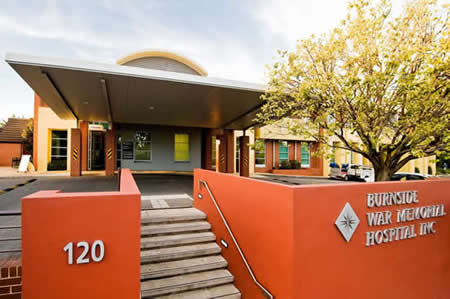When less is more – how a private hospital’s review of perioperative blood ordering practices reduced blood bag handling, improved patient safety and freed up nurses for patient care
Background
It was during a hospital-wide Australian Council on Healthcare Standards (ACHS) survey in 2010 that the surveyor noted that Burnside War Memorial Hospital held a high crossmatched blood inventory, a large proportion of which was returned to the laboratory unused. The recommendation was that the hospital “review the unused blood returned to the private pathology laboratories and report findings to the appropriate clinical review/quality committee.” Burnside Hospital’s Perioperative Services Clinical Manager and nursing staff, with the assistance of the BloodSafe program, took this one step further and implemented simple, but effective changes in its perioperative red blood cell ordering practices. These changes have since reduced blood handling, reduced a risk to patient safety and freed up the nursing staff for patient care, and enabled a reduction in crossed matched blood in the fridge. In addition, Burnside Hospital is well on its way to meeting Standard 7 of the National Safety and Quality Health Service Standards (NSQHS):
7.2 Undertaking a regular, comprehensive assessment of blood and blood product systems to identify risks to patient safety and taking action to reduce risks
7.2.1 The risks associated with transfusion practices and clinical use of blood and blood products are regularly assessed
7.2.2 Action is taken to reduce the risks associated with transfusion practices and the clinical use of blood and blood products
7.4 Undertaking quality improvement activities to improve the safe management of blood and blood products 
7.4.1 Quality improvement activities are undertaken to reduce the risks of patient harm from transfusion practices and the clinical use of blood and blood products
7.7 Ensuring the receipt, storage, collection and transport of blood and blood products within the organisation are consistent with best practice and/or guidelines
7.7.1 Regular review of the risks associated with receipt, storage, collection and transport of blood and blood products is undertaken
7.7.2 Action is taken to reduce the risk of incidents arising from the use of blood and blood products control systems
7.8 Minimising unnecessary wastage of blood and blood products
7.8.2 Action is taken to minimise wastage of blood and blood products
- Who are Burnside and BloodSafe?
- Managing blood at Burnside Hospital?
- Review and change management
- Improved outcomes
- Meeting Standard 7
For more information
To see other case studies in the series visit www.blood.gov.au/case-studies
To see a presentation by Trish Roberts featuring Burnside Hospital at the National Blood Symposium in Adelaide 2013 visit www.blood.gov.au/symposiums-2013
For a pdf version of the content on this page download the ![]() Burnside War Memorial Hospital Case Study Factsheet (992.97 KB)
Burnside War Memorial Hospital Case Study Factsheet (992.97 KB)
Contact Officers
For further information please contact:
|
Yvonne Rebner Clinical Manager, Perioperative Service Burnside War Memorial Hospital |
Trish Roberts BloodSafe Transfusion Nurse Consultant BloodSafe SA |
Acknowledgements
Thank you to the following people without whom this case study would not have been possible:
- Heather Messenger, Chief Executive Officer, Burnside War Memorial Hospital
- Yvonne (Thom) Rebner, Clinical Manager, Perioperative Service, Burnside War Memorial Hospital
- Trish Roberts, BloodSafe Transfusion Nurse Consultant, BloodSafe SA
- Tina Donaldson, Clinical Educator, Burnside War Memorial Hospital
- Wendy Gray, Clinical Manager, Burnside War Memorial Hospital
- Anne Catford, Clinical Nurse, Burnside War Memorial Hospital
- Helen O’Hara, Registered Nurse, Burnside War Memorial Hospital


